12 Things To do (and 5 NOT TO DO) in Amsterdam - Netherlands Travel Guide
Amsterdam, a city capable of being both ancient and modern, artistic and commercial, provincial and cosmopolitan. According to many, the secret is the Protestant culture of the merchants and sailors who, starting from the mid-16th century and then throughout the following century, made the city very rich, making it the crossroads for all commercial traffic between the Sea North, the Indies and the Americas. The city, as it is known, is spread over more than 100 canals, crossed by 600 bridges that connect 90 islands. We move mainly by bicycle and public transport which for years has guaranteed sustainable zero-emission mobility, from taxis to boats that sail along the canal belt. Amsterdam has always been a multicultural city (just think of the large Jewish community present) but there is no doubt that the alternative wave we mentioned has profoundly changed the way of life of its inhabitants. Quality of life that is very high also due to the presence of numerous museums.
1. Amsterdam’s Canals
The 1600s, the famous Golden Age we talked about in connection with the Rijksmuseum, did indeed bring riches and glory, but it also posed new and onerous challenges. One of these was the demographic explosion which, in the space of a few decades, imposed a new order on Amsterdam. It is to deal with this emergency that the canal belt around the old city was built. The main ones are: the Singel (ancient medieval moat outside the walls); the Heren, the Keizer and the Prinzen. A dense network of secondary canals (160 in all) has developed around these 4, connected by an equally dense network of bridges (600). An absolutely sui generis urban structure that UNESCO in 2010 included among the World Heritage sites. It is in Amsterdam's canal belt that many of the city's main attractions are found, not forgetting, of course, that the motorboat tour of the canals is itself a very popular tourist attraction.
2. Dam square
The heart of Amsterdam is undoubtedly Dam Square. Indeed, it is here that some of the main tourist attractions are concentrated, such as the Royal Palace (Koninklijk Paleis) and the New Church (Niewe Kerke) which, despite its name, actually dates back to XIV century. In the center of the square, then, there is the Nationaal Monument (or Nationaal Monument op de Dam), a 22-meter-high obelisk in memory of the victims of the Second World War. In the 1960s, sculpture became one of the favorite meeting places for hippies who increasingly flocked to the city from all over Europe and even from overseas. At a certain point, however, it was necessary to take measures to avoid the bivouac, thus returning the square to the free use of residents and tourists.
3. Van Gogh Museum
For many, the van Gogh Museum is reason enough to choose to visit Amsterdam. A museum born thanks to the availability of the heirs who in 1963 donated to the city over 200 paintings and 500 sketches made by the artist in the years of intense activity between Holland, Belgium and France. In 1973, ten years after the donation, the homonymous museum came to life which, in addition to some of the most famous works by Vincent van Gogh (just to mention a few, The Potato Eaters, Sunflowers, The Wheat Field with Crows) houses also paintings by Monet, Gaugin, Toulouse-Lautrec and other contemporary artists of the genius of Zundert. The Van Gogh Museum has undergone several renovations and changes over the years. The last one, in 2015, with the replacement of the main entrance, now accessible directly from Museumplein.
4. Rijksmuseum
Rijksmuseum (National Museum) is the most important Dutch museum and is located in Museumplein (Museum Square), a beautiful and well-kept square-park which also includes the Van Gogh Museum and the Stedelijk Museum, a Dutch modern and contemporary art museum. The Rijksmuseum, on the other hand, houses the richest collection of paintings from the so-called "Golden Age", the 17th century that saw the commercial and colonial expansion of the Netherlands. The most famous work of all is undoubtedly "The Night Watch" by Rembrandt (1606 - 1669), a painting that many critics have taken as a watershed in the Dutch artist's life marked by a successful youth and, on the contrary, an increasingly problematic maturity up to the misery of recent years. In addition to Rembrandt, the museum exhibits several works by Jan Vermeer (1632 - 1675) including the very famous "Milkmaid" and "Woman in blue". That's not all, because the museum's library (Rijksmuseum Research Library), by far the most complete public library on the history of art in the Netherlands, is also worth a visit.
5. Jordaan
The other side of the Dutch Golden Age. This, still today, is the most authentic meaning of the Joordan, the old working-class neighborhood of Amsterdam which during the 17th century was populated by Flemings, Spaniards, Jews, Huguenots looking for work in the expanding city. Overcrowding and poverty were characteristics of the neighborhood until the early 1900s. In truth, not the only ones, because the Jordan, like all the working-class neighborhoods that developed in Europe between the 17th and 19th centuries, also teemed with ingenuity and creativity. It is no coincidence that the philosopher Cartes, the painter Rembrandt and the poet Vondel also lived there, to whom the homonymous park we mentioned earlier is entitled. In short, a proletarian neighborhood that still bears the traces of the social struggles waged by its inhabitants. Near the Noorderkerk, a Protestant church in the neighborhood, there is a statue commemorating the events of 1934, when workers took to the streets against the halving of unemployment benefits and the protest was bloodily repressed by the police. If that's the story, the present says the Joordan is a residential neighborhood with pretty row houses and small bridges.
6. Leidseplein
After going around museums, parks and canals, he is giving us a few hours of break, otherwise what a holiday it would be! Leidseplein, the heart of Amsterdam's nightlife, is undoubtedly the right place. The square owes its name to Leidsepoort, a gigantic city gate on the road that led from the city of Leyden, home to the oldest Dutch university, to the capital. The gate is no longer there, as are the horses and carriages that stood in the square until the 19th century. In their place, open-air cafes, beer gardens, coffeeshops (there is one of the branches of "The Bulldog", the first coffeeshop in Amsterdam) and discos, including the very famous "Paradiso", housed in a deconsecrated church. During the day, however, this square is the stage for numerous street artists who entertain the many tourists present.
7. Stedelijk Museum
The Stedelijk Museum, the most important Dutch modern and contemporary art museum, is located right next to the Van Gogh Museum and, like the latter, has undergone several renovations over time. The latest, in 2012 with the construction of the futuristic modern pavilion whose facade was made with a particular synthetic material normally used in naval and aviation engineering. In the modern part of the museum temporary exhibitions are held, while in the old building there is a permanent collection consisting of works by Manet, Mandrian, Appel, Chagall, Picasso and others. A collection that spans over a century of history – from 1850 to the present day – is interesting to see to get a comprehensive overview of the Museumplein.
8. Vondelpark
Despite its bourgeois origins (the area was designed in 1864 thanks to the generosity of a group of citizens, eager to give the people a green lung in the city centre), Vondelpark rose to media prominence almost a hundred years later. In the 1960s, in fact, the approximately 45 hectares of the park were gradually occupied by thousands of hippies from every corner of Europe and, in many cases, even from overseas. As we mentioned at the beginning, the circumstance has profoundly changed the uses and customs of the city. The alternative wave has taken root, even if the public authorities have been able to smooth out the most problematic aspects both from a social point of view and as regards public order. For example, around the mid-1970s, the park was cleared and returned to the full use of residents and tourists who, especially during the summer months, like to spend the hours of free time available here.
9. Begijnhof
At the beginning we referred to the versatility of Amsterdam, a city rich in history, museums and monuments which in the last 30, 40 years, however, has become a sort of homeland of transgression. A drift, the latter, that the city administration has always tried to tame: on the one hand, by supporting it; on the other, trying to contain the risks to public order as much as possible. The simultaneous presence of different types of visitors (with the infinite combinations of the case) often, however, causes the city center to be overcrowded. Chaotic. In any case, don't worry. Those who want a little peace and relaxation have a comfortable and easily accessible alternative at their disposal. We are talking about Begijnhof, an ancient convent of Catholic lay nuns (Beguines) dedicated to assisting the poor and needy. Even today, which is a simple park inhabited mainly by students and the elderly, the Begijnhof has miraculously preserved its contemplative and peaceful aura intact.
10. Get on the bike
There are over 800,000 bicycles in Amsterdam – more than the inhabitants themselves! Getting around by bike in Amsterdam is a way of life made even easier by the unbeatable network of cycle paths and the flat landscape. Amsterdam regularly features at the top of cycling-friendly city lists, and there's no better way to discover the city's streets, canals and attractions than on two wheels. Cycling in Amsterdam is safe, fun and invigorating.
11. Anne Frank House
You can't say you've been to Amsterdam without visiting the Anne Frank House. It is no coincidence that the numbers of the museum speak for themselves. Over a million visitors a year, mostly young people under 25 and non-Europeans. Figures that say two things: that the sad story of this girl, for over two years imprisoned behind a bookstore, and finally deported to the Bergen Belsen concentration camp, still creates empathy 70 years later; the other aspect, closely linked to the first, is that to fully grasp the tragic dimension of the story it is necessary to go beyond the emotional data, trying to explain in more detail the historical context in which the facts took place. This second objective explains why the most famous house-museum in the world, at number 263 of Prinsengracht, is undergoing renovation works which aim precisely to renew the itinerary and the contents of the visit.
12. Westertoren
Westerkerk (lit. the "Western Church") is the largest Protestant church in Amsterdam. Designed in 1620 by the city architect Hendrick de Kaiser, it was completed in 1632, several years after the death of "The Elder" (as de Kaiser was nicknamed). It has a Renaissance façade, while inside it is rather sober, almost bare, except for the presence of the pipe organ. The great Rembrandt is buried here, even if nobody knows exactly where. There are those who believe he is buried in an unspecified place along the northern perimeter of the church. Together with the artist, his partner Hendrickie Stoffels and perhaps his son Titus van Rijn. In addition to the presence of Rembrandt, the church is famous for its bell tower. 85 meters tall, the Westertoren is often mentioned in Anne Frank's diary that from the bell ringing of the church she drew great consolation compared to her exiled condition. Reaching the top of the tower allows you to admire one of the most beautiful views of Amsterdam, even if the feat is not within everyone's reach.
13. 5 Warnings
Do not drink alcohol on the city streets
Amsterdam for many is the city where everything is allowed, the one of the most unbridled freedom, and for this reason they believe they can do anything. In reality, there are strict rules and one of these concerns the consumption of alcohol. It is strictly forbidden to drink on the street.
Don't smoke on the street
You can smoke in the premises of the city and in some outdoor areas - such as stations - there are areas strictly reserved for smokers. However, smoking is prohibited on the street. It seems absurd, but the penalty is a very heavy fine.
Beware of fake museums
It is not a ban, but a warning: on the streets of Amsterdam you come across many shops "disguised" as museums. The aim is to attract visitors, convinced they are seeing an exhibition, and instead involve them in some purchase.
Don't walk on the bike paths
One of the traditions of the city is the bicycle ride and the Dutch are very fond of this custom. So much so that they do not look kindly on those who use the cycle paths for walking. I recommend: avoid.
Don't forget the tip
In Holland, almost an obligation: when you enter a place, of any kind, it is customary to leave a tip to the waiter who served you. Not tipping brings the harm of being branded a bad customer.
-
![[25 Deciphering Amsterdam] A Journey Through Riddles and Canals #city #travel #amsterdam](https://hugh.cdn.rumble.cloud/s/s8/1/f/d/C/V/fdCVq.0kob-small-25-Deciphering-Amsterdam-A-.jpg) 7:38
7:38
Uncover Cities & Sights
2 months ago[25 Deciphering Amsterdam] A Journey Through Riddles and Canals #city #travel #amsterdam
6 -
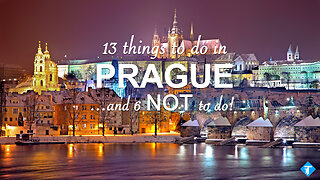 11:43
11:43
TheHorizonView
2 months ago13 things to do (AND 6 NOT TO DO) in Prague - Czech Republic Travel Guide
50 -
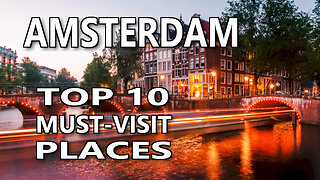 9:43
9:43
World Excursionist
23 days agoThe Allure of Amsterdam: Your Guide to the City's Best Sites
4 -
 4:42
4:42
The Tour On Earth
1 year agoDiscovering the Best of Brussels: Your Ultimate Travel Guide to Belgium's Capital City
53 -
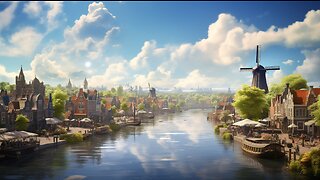 5:46
5:46
Improve Your Knowledge MK
11 months ago10 Amazing Facts About the Netherlands | Fun facts
47 -
 3:49
3:49
AccessibilityTravel
5 months agoHow To Explore Amsterdam : A Disabled Traveler's Guide 👨🦽
1 -
 1:53
1:53
Destination: Everywhere
11 months agoExploring Durbuy, Belgium - A Charming Medieval Gem 🇧🇪
22 -
 9:59
9:59
Rumble en Français
1 year agoAmsterdam Travel
20 -
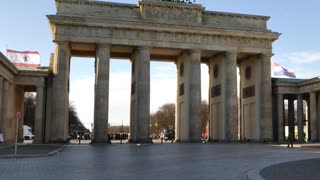 0:32
0:32
manas0210
2 years agoThree things to do in berlin travel
28 -
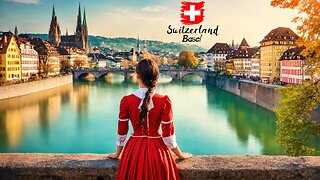 1:50:37
1:50:37
Tourist Walk Tours
3 months ago $0.01 earnedSwitzerland's Jewel! A 4K Walking Tour in Basel, the City of Art! Beautiful Switzerland
78